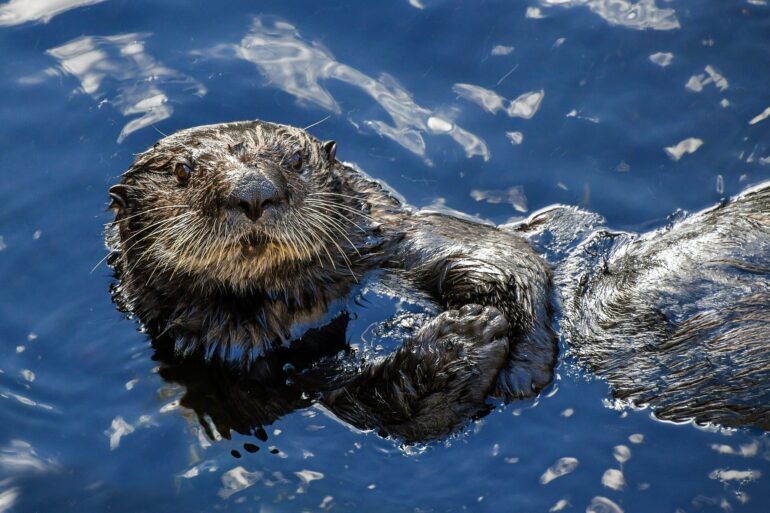Sea otters are famed for their luscious pelts, but the fur almost led to their extinction. By 1938, only a tiny population of ~50 remained clinging to the central California coast. Since then, the mammals have battled back. However, the charismatic creatures are still at risk from crude oil spilled by offshore rigs.
But no one knew how severely crude oil impacts the buoyancy of sea otter fur or how well it recovers after cleaning. And Kate Riordan from California Polytechnic State University San Luis Obispo (Cal Poly SLO), U.S., adds that the fur of newborn sea otter pups was also believed to be particularly buoyant, but no one had checked.
Curious to answer these questions, Riordan joined forces with Nicole Thometz (University of San Francisco, U.S.), Francesca Batac [California Department of Fish and Wildlife (CDFW), U.S.] and Heather Liwanag (Cal Poly SLO) to investigate.
They publish their discovery in the Journal of Experimental Biology that crude oil pollution dramatically reduces sea otter fur buoyancy, placing pups at particular risk thanks to their larger surface area relative to their body mass, and that the buoyancy does not fully recover, even after cleaning.
Sea otters in the wild die naturally for many reasons and are collected by the CDFW—which monitors the health of the population—so they passed on sections of a few precious pelts from southern sea otters ranging in age from tiny pups up to nine-year-old adults to Riordan, Annika Dean and Sarah Kerr (both from Cal Poly SLO).
After cleaning the pelt, the team then weighed a 25 cm2 portion from each in air and in water to determine the fur’s buoyancy. However, when they compared the buoyancy of the youngsters’ pelts with that of the fully grown adults, there was no difference. All of the sea otter fur portions had a buoyancy of ~0.3 N, about the same as a 10 g piece of cork, so a sea otter pup’s fur is no more buoyant than the fur of its parents.
However, when the team calculated the impact of the fur’s buoyancy on the pups’ entire bodies, the youngsters’ fur was almost three times more buoyant for their body mass than that of the adults, thanks to the pups’ relatively large surface areas for their size. This allows the pups to trap more air for their smaller body mass to make them extremely buoyant and keep them bobbing at the surface while mum’s off hunting.
But how did a dousing of crude oil affect the fur’s buoyancy? This time, the team massaged crude oil into the fur, mimicking how sea otters groom naturally—inadvertently rubbing the pollution into their pelts—before measuring the oil-sodden fur’s buoyancy.
Sure enough, the fur’s buoyancy plummeted by almost 55% to 0.145 N, making it much more difficult for the animals to remain afloat. The reduction in buoyancy coupled with the loss of insulation would almost certainly prove fatal in the wild.
Fortunately, conservationists swoop in quickly in the event of major crude oil spills, drenching oil-soaked creatures in detergent to rid them of the oil, but how well does the buoyancy of sea otter fur recover after cleaning? Riordan and colleagues gently washed each oiled pelt with dishwashing liquid, before rinsing thoroughly, finishing with a blow-dry and remeasuring the pelt’s buoyancy. As they had hoped, the buoyancy of the fur improved, but only by 36% to 0.197 N, still almost 40% down from the fur’s natural buoyancy.
The team suspects that living sea otters may recover better after cleaning because they groom continually, but they suggest that it is essential that detergent is thoroughly rinsed off after cleaning to ensure that oiled sea otters recover fully.
More information:
A novel comparison of southern sea otter (Enhydra lutris nereis) fur buoyancy across ontogeny, Journal of Experimental Biology (2024). DOI: 10.1242/jeb.249406
Provided by
The Company of Biologists
Citation:
Scientists discover crude oil decimates sea otter buoyancy (2024, September 12)



